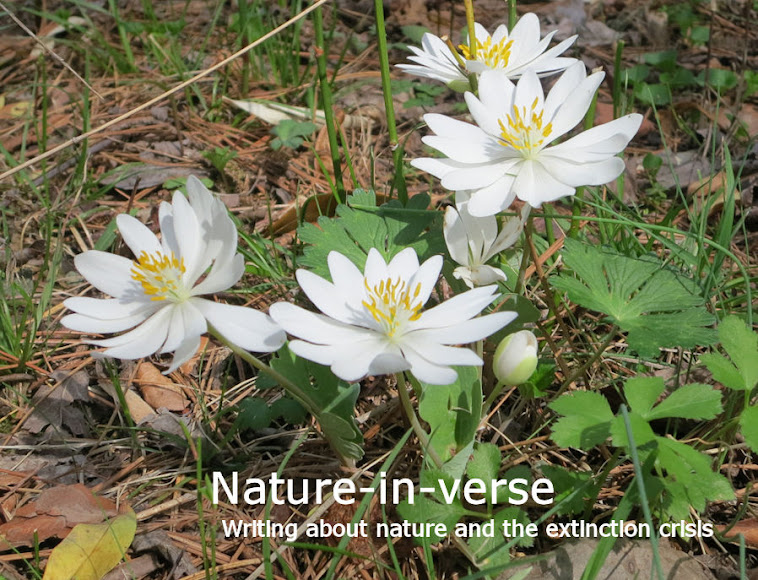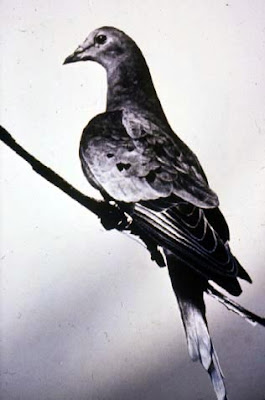Once again, Mary T. of NC was correct in her ID of the image as an American Toad. Congratulations Mary!
Sunday, September 29, 2013
Wednesday, September 18, 2013
Tuesday, September 17, 2013
Mystery image of September 11, 2013 identified
Mary. T of North Carolina correctly identified last week's mystery image. Congratulations Mary!
It is, indeed, a Luna Moth.
I found the above wing parts one morning on a road while at Jordan Lake, NC. The moth must have been a bat's dinner the previous night. The soft body parts were missing leaving these lovely wings for me to collect.
It is, indeed, a Luna Moth.
I found the above wing parts one morning on a road while at Jordan Lake, NC. The moth must have been a bat's dinner the previous night. The soft body parts were missing leaving these lovely wings for me to collect.
Wednesday, September 11, 2013
Mystery image, September 11, 2013
The beauty in nature is surely a teacher. What stunning colors, shapes and textures comprise the above image. It is not a textile but from a living creature.
Can you guess what it is?
Starting today, I'll post a mystery photo every week and the challenge is for you to identity it.
Write in your ID below and next week, I'll let you know who was right. It could be you.
Sunday, September 1, 2013
A contemplation on a lost bird
Ninety-nine years ago today, the Passenger Pigeon was extinguished from this earth. Once numbering four billion, they flew in great flocks that were miles wide and miles long. Imagine a flock so large that it took fourteen hours to pass overhead. Yes, we can only imagine.
The extinction of the Passenger Pigeon occurred in a mere 40 years. Forty years to erase four billion souls.
Twenty-five million erased every year.
68,493 erased every day.
What happened?
This is Martha. She was the last surviving member of her species who died in her aviary at the Cincinnati Zoo on September 1, 1914.
They were elegant birds of lovely iridescent colors who lived in highly social flocks.
They were hunted and persecuted and lost habitat to farming. They were horrifically slaughtered by using nets set to capture them in flight. Then, once entangled, young boys were employed to snap their necks.
Their massive rookeries, where they would rest and mate, were not safe either. Men would fire aimlessly at the huge mass of birds huddled in trees so numbered that their weight would snap branches.
They were not only slaughtered for food and sport but also because they were perceived as pests. When huge swaths of forest was logged for farming, removing many of their ancestral rookeries, they would gather in the fields eating crops and seeds where they were baited.
It was a massive slaughter of the most numerous bird ever to populate the planet.
This is all that is left.
The Passenger Pigeon is but one of many species that have been pushed off this planet by us. There are many, many more. And the extinctions continue. Currently, worldwide, there are over 44,838 on the endangered species list.
I've come to know my neighborhood birds as I've been feeding and observing them now for about three years. And, even though they are familiar with me, they still flee when I emerge from my home to fill the feeders. I cannot gain their trust. I do not wonder at their fear.
What horrors have they witnessed committed by humans with each rising and setting of the sun? What memories are imprinted in their genes carried from generation to generation that informs them to be wary of us? It is said that the pioneers would walk through the forest blasting everything in their wake. Wild turkey, doves, cougars, bear, deer and many more well felled for fun by their guns. Did their ancestors witness such carnage? Did they witness the slaughter of the Passenger Pigeon? The Ivory-billed Woodpecker? The Carolina Parakeet? It is possible.
And what of now? Do they see and hear the hunters blasting in the forest and the lakes? Some people today, although illegal, shoot song birds from the skies or feed them rice so their stomachs explode from the swelling of the grain.
Charles Darwin, during his voyage on the HMS Beagle, encountered birds on the many islands he visited who were not afraid of humans but would come and land on a shoulder or a hand. It was their first encounter with our species so they had no reason to fear us.
It pains me to know I will most likely never gain such trust no matter what kindness I show them. Their ingrained fear of us runs deep and can only be gained by the witnessing of horrific acts.
But, I can dream of a day when one may alight on my shoulder.
If you are interested in knowing more about the Passenger Pigeon and other birds that have gone extinct at the hands of humans, I recommend reading "Hope is a thing with feathers: A personal chronicle of vanished birds" by Christopher Cokinos.
To know more about endangered species, visit photographer Joel Sartore's site and purchase a copy of his book "Rare." He is on a mission to photograph species before they are gone forever and hopefully inspire people to care.
And through my writings, it is my hope too.
The extinction of the Passenger Pigeon occurred in a mere 40 years. Forty years to erase four billion souls.
Twenty-five million erased every year.
68,493 erased every day.
What happened?
This is Martha. She was the last surviving member of her species who died in her aviary at the Cincinnati Zoo on September 1, 1914.
They were elegant birds of lovely iridescent colors who lived in highly social flocks.
They were hunted and persecuted and lost habitat to farming. They were horrifically slaughtered by using nets set to capture them in flight. Then, once entangled, young boys were employed to snap their necks.
Their massive rookeries, where they would rest and mate, were not safe either. Men would fire aimlessly at the huge mass of birds huddled in trees so numbered that their weight would snap branches.
They were not only slaughtered for food and sport but also because they were perceived as pests. When huge swaths of forest was logged for farming, removing many of their ancestral rookeries, they would gather in the fields eating crops and seeds where they were baited.
It was a massive slaughter of the most numerous bird ever to populate the planet.
This is all that is left.
A memorial plaque and statue outside the aviary where Martha spent her last days.
On the day of her passing, how many humans contemplated the profound meaning of this loss or reflected on their culpability in the extinction?
The Passenger Pigeon is but one of many species that have been pushed off this planet by us. There are many, many more. And the extinctions continue. Currently, worldwide, there are over 44,838 on the endangered species list.
I've come to know my neighborhood birds as I've been feeding and observing them now for about three years. And, even though they are familiar with me, they still flee when I emerge from my home to fill the feeders. I cannot gain their trust. I do not wonder at their fear.
What horrors have they witnessed committed by humans with each rising and setting of the sun? What memories are imprinted in their genes carried from generation to generation that informs them to be wary of us? It is said that the pioneers would walk through the forest blasting everything in their wake. Wild turkey, doves, cougars, bear, deer and many more well felled for fun by their guns. Did their ancestors witness such carnage? Did they witness the slaughter of the Passenger Pigeon? The Ivory-billed Woodpecker? The Carolina Parakeet? It is possible.
And what of now? Do they see and hear the hunters blasting in the forest and the lakes? Some people today, although illegal, shoot song birds from the skies or feed them rice so their stomachs explode from the swelling of the grain.
Charles Darwin, during his voyage on the HMS Beagle, encountered birds on the many islands he visited who were not afraid of humans but would come and land on a shoulder or a hand. It was their first encounter with our species so they had no reason to fear us.
It pains me to know I will most likely never gain such trust no matter what kindness I show them. Their ingrained fear of us runs deep and can only be gained by the witnessing of horrific acts.
But, I can dream of a day when one may alight on my shoulder.
If you are interested in knowing more about the Passenger Pigeon and other birds that have gone extinct at the hands of humans, I recommend reading "Hope is a thing with feathers: A personal chronicle of vanished birds" by Christopher Cokinos.
To know more about endangered species, visit photographer Joel Sartore's site and purchase a copy of his book "Rare." He is on a mission to photograph species before they are gone forever and hopefully inspire people to care.
And through my writings, it is my hope too.
Subscribe to:
Posts (Atom)









